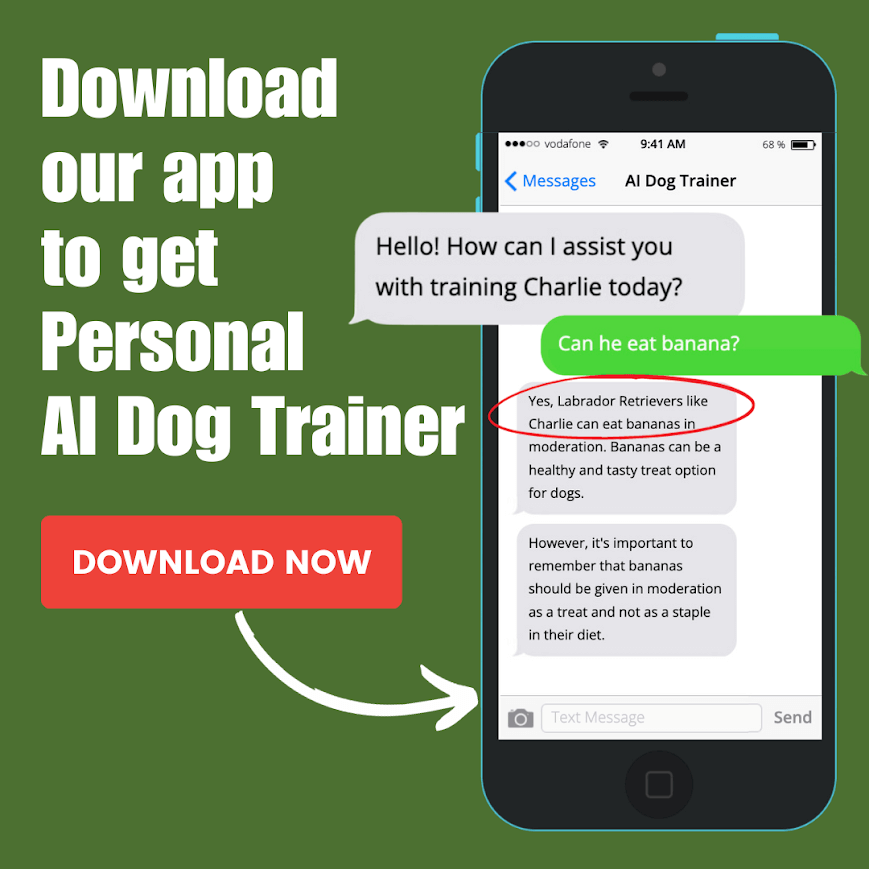Do you ever find yourself wondering why your dog starts humping everything in sight after a good meal? It can be a perplexing behavior that leaves many dog owners scratching their heads. While humping is often associated with sexual behavior, it turns out that there are a variety of reasons why dogs might engage in this behavior after eating.
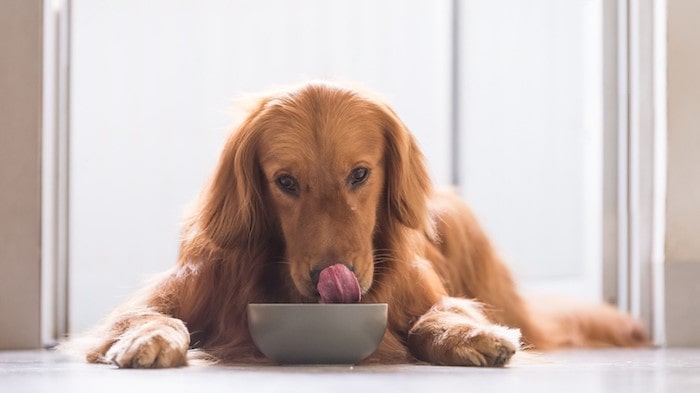
From biological and hormonal factors to behavioral and medical issues, the causes of humping can be complex and multifaceted. In this article, we’ll dive into the fascinating world of canine humping after mealtime and explore the different reasons why your dog might be doing it.
So grab a snack (but maybe not for your dog!), settle in, and let’s unravel the mystery of why dogs hump after eating.
Table of Contents
The Possible Reasons Why Dogs Hump After Eating
Dogs are known for their quirky behaviors, and humping is certainly no exception. While many people assume that humping is purely a sexual behavior, it can actually have a variety of different causes, including after mealtime. Here are some of the possible reasons why dogs may hump after eating:
- Biological and hormonal reasons: Dogs are animals with strong instincts, and their behavior can be influenced by their biology and hormones. Here are two possible biological and hormonal reasons for humping after eating:
- Sexual arousal: Dogs can become sexually aroused by a variety of stimuli, including eating. For some dogs, eating a large meal can trigger sexual arousal, leading to humping behaviors.
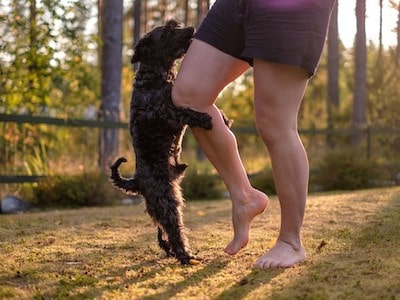
- Marking behavior: Humping can also be a way for dogs to mark their territory and communicate their presence to other animals. After eating, some dogs may feel the need to assert their dominance by humping objects or other animals.
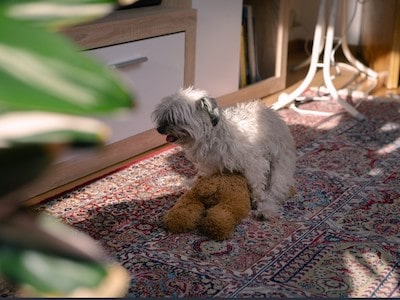
- Behavioral reasons: Dogs can also engage in humping for a variety of behavioral reasons. Here are three possible behavioral reasons for humping after eating:
- Excitement or stress relief: Humping can be a way for dogs to release pent-up energy or alleviate stress. After eating, some dogs may become excited or stressed, leading to humping behaviors.
- Attention-seeking behavior: Dogs are social animals and crave attention from their owners. Some dogs may hump after eating as a way to get their owner’s attention.
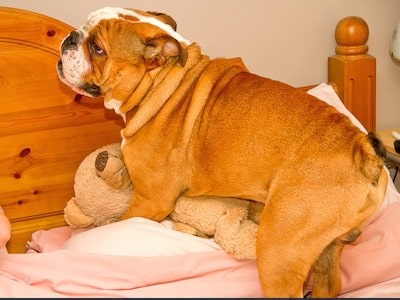
- Learned behavior: Dogs are intelligent animals and can learn behaviors through reinforcement. If a dog has been rewarded for humping in the past, they may continue to engage in the behavior after eating.
- Medical reasons: In some cases, humping after eating can be a sign of an underlying medical issue. Here are two possible medical reasons for humping after eating:
- Digestive discomfort: If a dog experiences digestive discomfort after eating, they may engage in humping as a way to alleviate their discomfort.
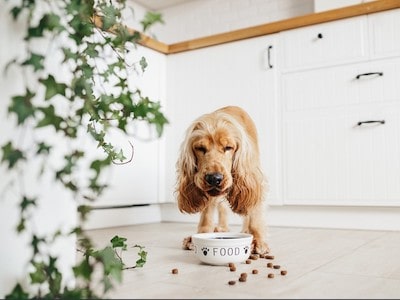
- Pain or discomfort: Humping can also be a sign of pain or discomfort, especially if the behavior is accompanied by other signs of distress.
In summary, humping after eating can have a variety of different causes, from biological and hormonal factors to behavioral and medical issues. Understanding the possible reasons behind your dog’s behavior can help you manage it more effectively and keep your furry friend happy and healthy.
How to Stop your Dog from Humping?
If your dog is humping after eating, you may be wondering how to stop the behavior. Here are some tips to help you manage your dog’s humping:
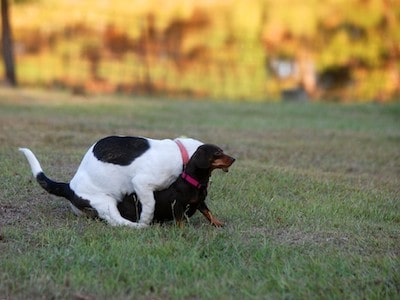
- Identify the cause: Before you can effectively address your dog’s humping behavior, it’s important to understand why they are doing it. Consider the possible reasons outlined in the previous section and observe your dog’s behavior to see if you can pinpoint a specific trigger.
- Redirect their attention: If your dog is humping to seek attention, redirecting their attention to a more appropriate activity can be helpful. Engage in playtime, offer toys, or take your dog for a walk to help them burn off excess energy.
- Interrupt the behavior: If you catch your dog in the act of humping, interrupt the behavior by saying “no” firmly and redirecting their attention. Avoid physical punishment, as this can be harmful and may make the behavior worse.
- Consistency is key: To effectively manage your dog’s humping behavior, it’s important to be consistent in your response. Everyone in your household should respond to the behavior in the same way to avoid confusing your dog.
- Consider spaying or neutering: If your dog’s humping behavior is driven by sexual arousal, spaying or neutering can help reduce the behavior.
- Seek professional help: If your dog’s humping behavior is causing problems or you’re struggling to manage it on your own, consider seeking the help of a professional dog trainer or behaviorist. They can help you identify the underlying cause of the behavior and develop a tailored plan to address it.
FAQs
Can humping after eating be a sign of stress or anxiety?
Yes, humping can be a way for dogs to release pent-up energy or alleviate stress. If you suspect that your dog’s humping behavior is driven by stress or anxiety, consider providing them with more opportunities for exercise and playtime, as well as implementing stress-reduction techniques like aromatherapy or massage.
Can spaying or neutering help reduce humping after eating?
Spaying or neutering can help reduce humping behavior in dogs, particularly if it’s driven by sexual arousal. However, it should be noted that this may not completely stop the behavior, especially if other factors such as stress or attention-seeking are involved.
Can humping after eating be a sign of a lack of training?
Yes, humping can be a sign that your dog needs more training or guidance. If your dog is engaging in this behavior frequently, it’s important to work with them to establish clear boundaries and expectations. Consider enrolling in obedience classes or working with a professional dog trainer to address the behavior.
Is humping after eating a sign of aggression?
Not necessarily. While humping can be a way for dogs to assert their dominance, it doesn’t always indicate aggression. However, if your dog is displaying other aggressive behaviors or seems to be targeting specific individuals or animals, it’s important to address the behavior promptly and seek professional help if needed.
Conclusion
In summary, humping after eating is a common behavior among dogs, but it can be the result of various causes such as stress, anxiety, boredom or sexual arousal. Therefore it is important to identify the root cause and address it appropriately by providing your dog with appropriate mental and physical stimulation, setting clear boundaries and expectations, seeking professional help if needed. Consistency in dealing with undesired behaviors while being patient are essential in maintaining a good relationship between you both.
Corey is the founder of DogNeedsBest, and her motive behind this website is to provide a platform where pet parents can get free access resources that would them in petting dogs in a better way. She spends her free time taking care of pets at shelter homes of abandoned animals. Corey also donates a certain portion of her wealth to pet shelter homes in Miami, Naples, and Tampa.


